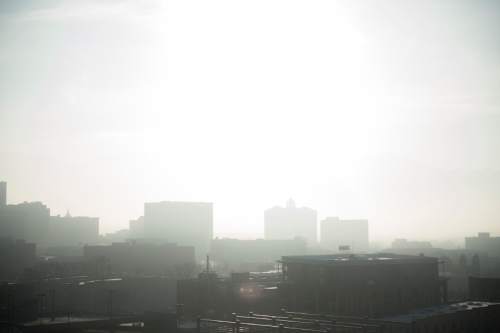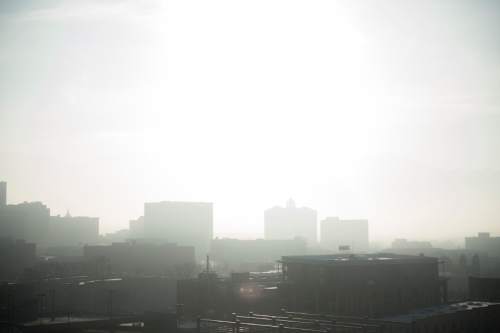This is an archived article that was published on sltrib.com in 2015, and information in the article may be outdated. It is provided only for personal research purposes and may not be reprinted.
Making the call between a Wasatch Front no-burn day and a "think long and hard about it" day is a lot of science and a little bit of gut.
And state regulators acknowledge they are more likely to make the call to block burning these days in hopes of slowing down inversions.
"We would rather be more protective of public health," said Donna Spangler, Utah Department of Environmental Quality spokewoman.
After a week of listless weather over the Salt Lake Valley, the winter's first real inversion has settled in, triggering calls to reduce driving and eliminate wood burning, obliterating mountain views and forcing some residents indoors to escape the buildup of particulate pollution.
With state regulators moving more quickly to call for "mandatory action" in an attempt to stall the gunk's momentum, Wasatch Front residents likely will have to get used to not burning and being asked to limit their driving — even when PM 2.5 levels remain well below the federal limit of 35 micrograms per cubic meter.
When inversions begin building, air quality regulators will declare "voluntary action," then upgrade it to "mandatory" as weather forecasts warrant, Spangler said.
The idea is to slow the concentrations of pollution so their peaks during an inversion are not as high.
Fine particulate pollution is particularly hard on the young and elderly and people with compromised immune systems. Particulate pollution is harmful to the respiratory system, because the tiny particles can penetrate deep into tissues, and can trigger heart and asthma attacks.
As of Saturday, DEQ scientists had called 14 mandatory no-burn days and just four voluntary days so far this season, which started Nov. 1.
Last year, they called 31 mandatory and 18 voluntary days during the 120-day inversion season that ends March 1.
Since 2012, the state has separated its air quality health message from the action message. The color-coded health warning — green, yellow, orange and red — is based on current conditions, while the action alert — voluntary or mandatory — is now pegged to forecasted conditions.
Spangler said DEQ anticipates some complaints about frequent burn bans. But state air quality monitors believe their new standards could mitigate the severity of the state's frequent inversions.
Emissions generated during an inversion generally stay in the valley until weather conditions change, so that fire on a clear day is adding to the gunk accumulating the next day.
Every afternoon since Monday, Salt Lake's pollution has spiked above the 35-microgram threshold into the "orange" range deemed "unhealthy for sensitive groups," according to Division of Air Quality monitoring data. Pollution invariably declines during the night, but levels have remained in the "yellow," or moderate range all week.
Weather forecasts indicate conditions could improve this weekend with the arrival of some precipitation. But expect only a brief reprieve on Tuesday, said Glen Merrill of the National Weather Service.
Conditions could have been worse this week if there had been more snow on the ground and valley temperatures were lower, he said. But cloud cover kept valley temperatures relatively warm and helped weaken the inversion.
"Having that cloud cover saved us from seeing it become extreme," Merrill said.
The melting of holiday snowfall also helped cut the severity of the inversion, according to Bo Call, monitoring chief with the Utah Division of Air Quality.
"With the temperatures getting warm, we haven't witnessed anything too tremendous," Call said. "But [particulate pollution] is now shooting into the 50s [micrograms per cubic meter]. We expect that to continue.
"A front is coming through early next week," he added. "It might clear us out and then we'll start the cycle over again."







